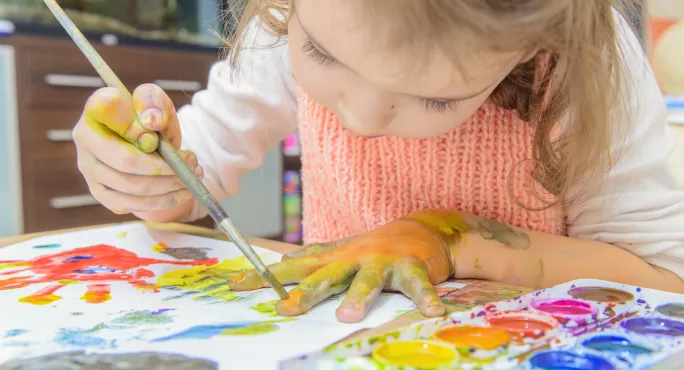When we restrict children’s creativity by valuing product over process we are essentially prioritising aesthetics over learning and development.
Take art and craft activities in early years foundation stage (EYFS). A child creates a picture of a chicken but places the legs coming out of its head - it doesn’t look like a chicken should so we suggest they put the legs in the “right” place.
This risks undermining the child’s attempts and individualism as we take over, fixing mistakes so they have a perfect picture to take home.
In doing so we are not only putting pressure on ourselves but the children too, but worst of all is that we risk undermining their confidence to create and express themselves.
Unique eyes
How then do we ensure our provision is both challenging and meaningful for the children in our care? Instead of striving for the perfect chicken, or Valentine’s card or self-portrait, let’s celebrate the child-led approach.
I’d much rather see a display of different faces with eyes on chins and three noses than perfect, standardised portraits, all the same.
Enabling children to develop personal, social and emotional skills to set them up for life means we have to allow them to experiment and investigate. This taps into a child’s innate drive to be curious and explore.
By offering time and space to “have a go”, we are empowering children to take risks and think things through independently, not to mention developing creativity and imagination.
However, do we always offer enough of this? Perhaps sometimes we are too quick to jump in and stifle independence in favour of perfection.
Facilitators, not controllers
We need to fight this instinct though. Valuing the process of creation means children take the lead, with our role being facilitator of the learning rather than us controlling the experience.
We can provide the resources and the time and space to create with flexibility for children to experiment.
Observing this process highlights how children make plans, adjust them as necessary, thinking things through, making choices and finding ways to do things.
All of these elements interconnect as part of a child’s characteristics of effective learning and underpin all development in EYFS.
Through facilitating artistic processes, we are enabling children to experiment through trial and error, express themselves individually and take ownership of their learning.
Ultimately, let’s celebrate the uniqueness of children in the EYFS, enabling them to say “I made that” and feel a sense of accomplishment without worrying about concepts of “right or wrong”.
Emma Davis is an early years teacher. She tweets @EmmaDee77


